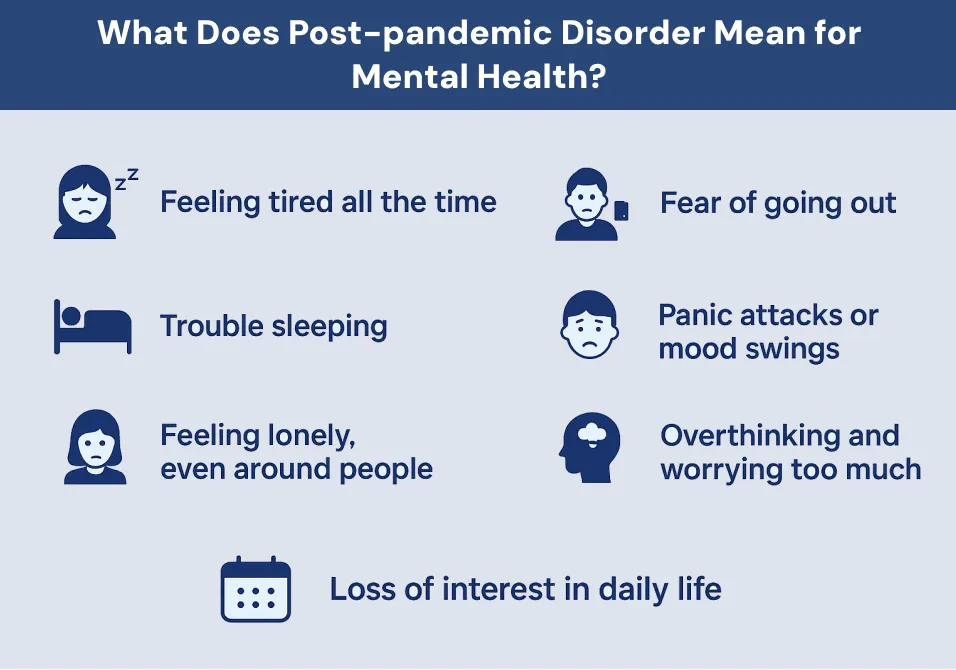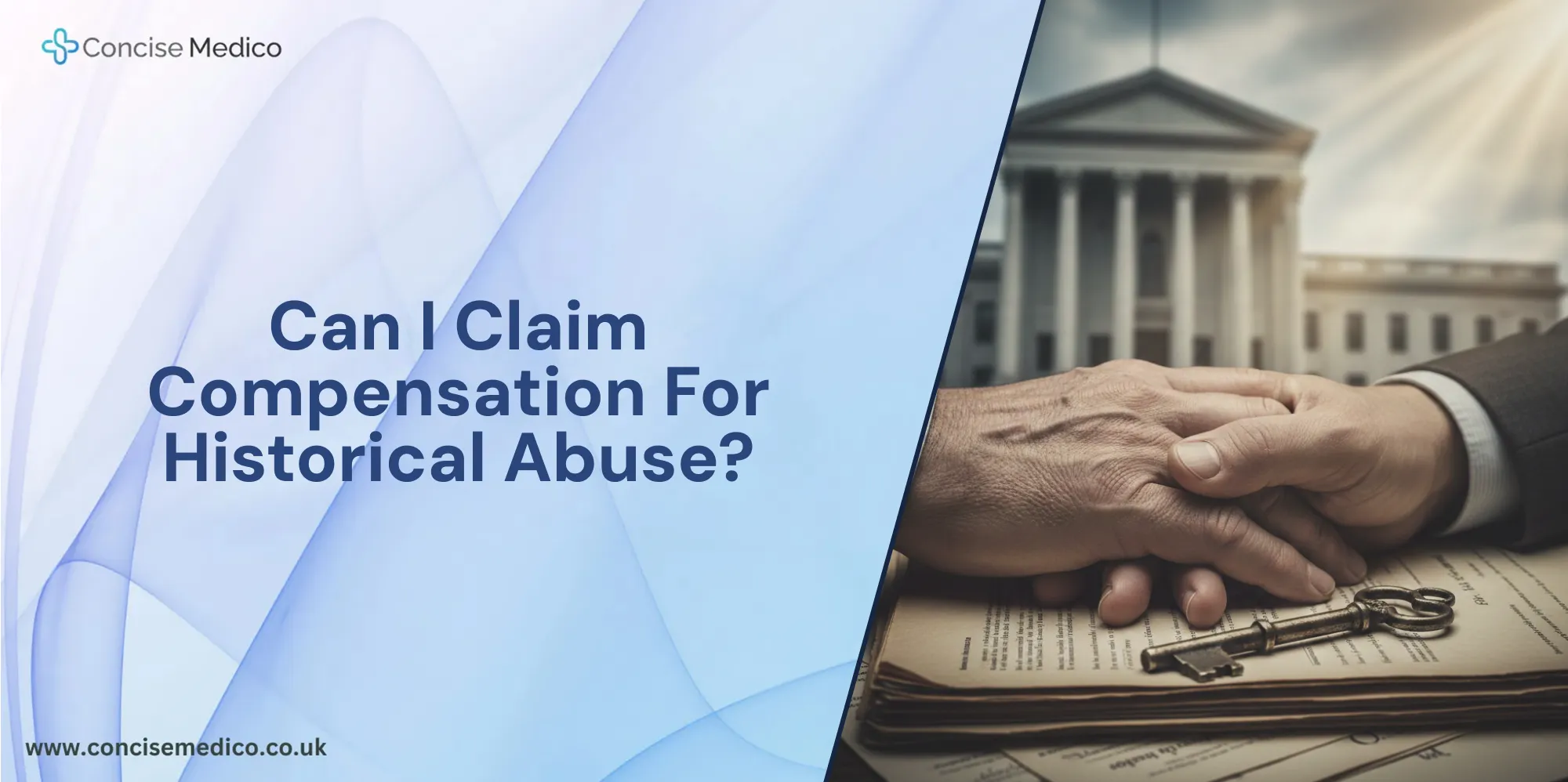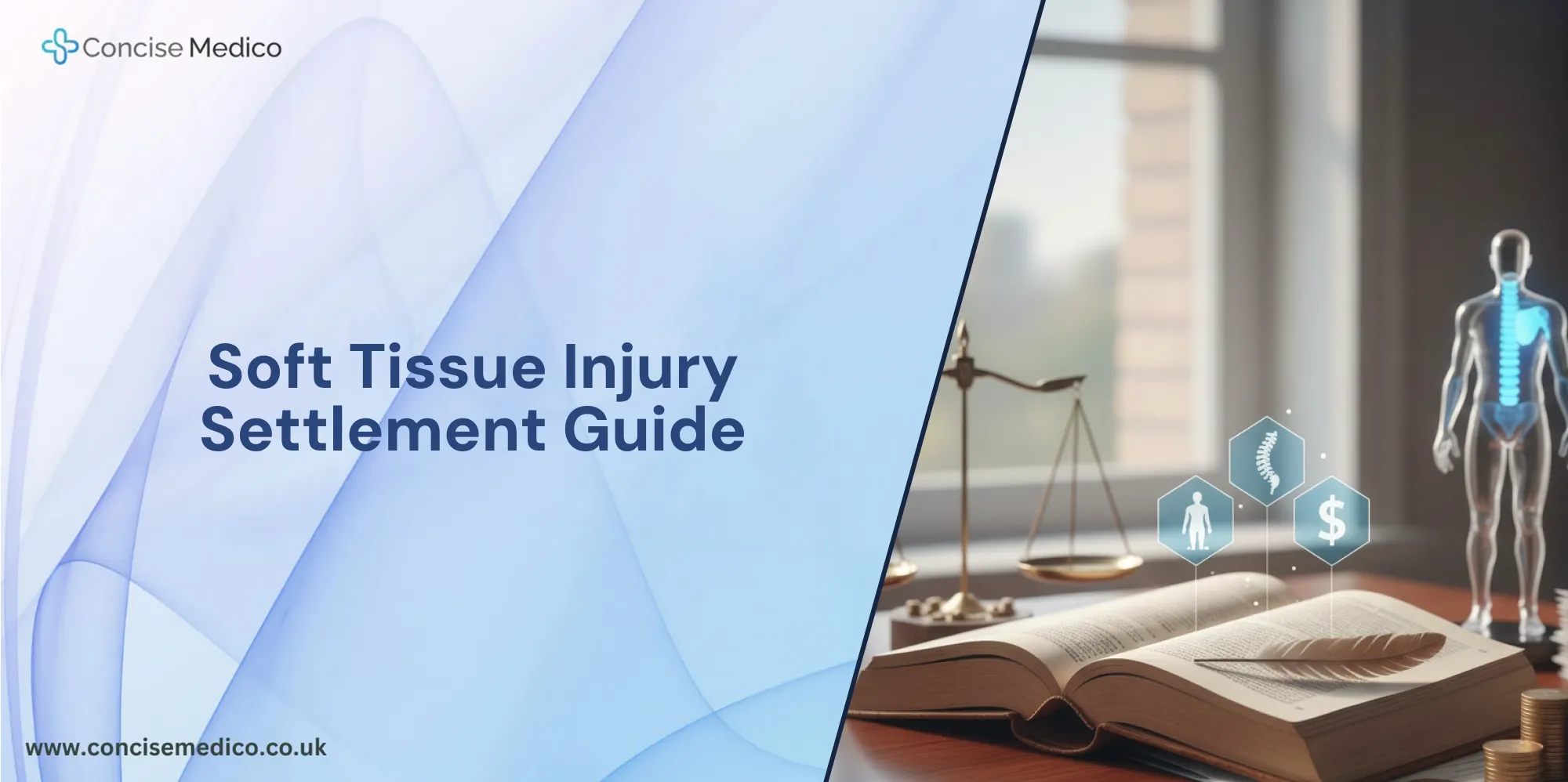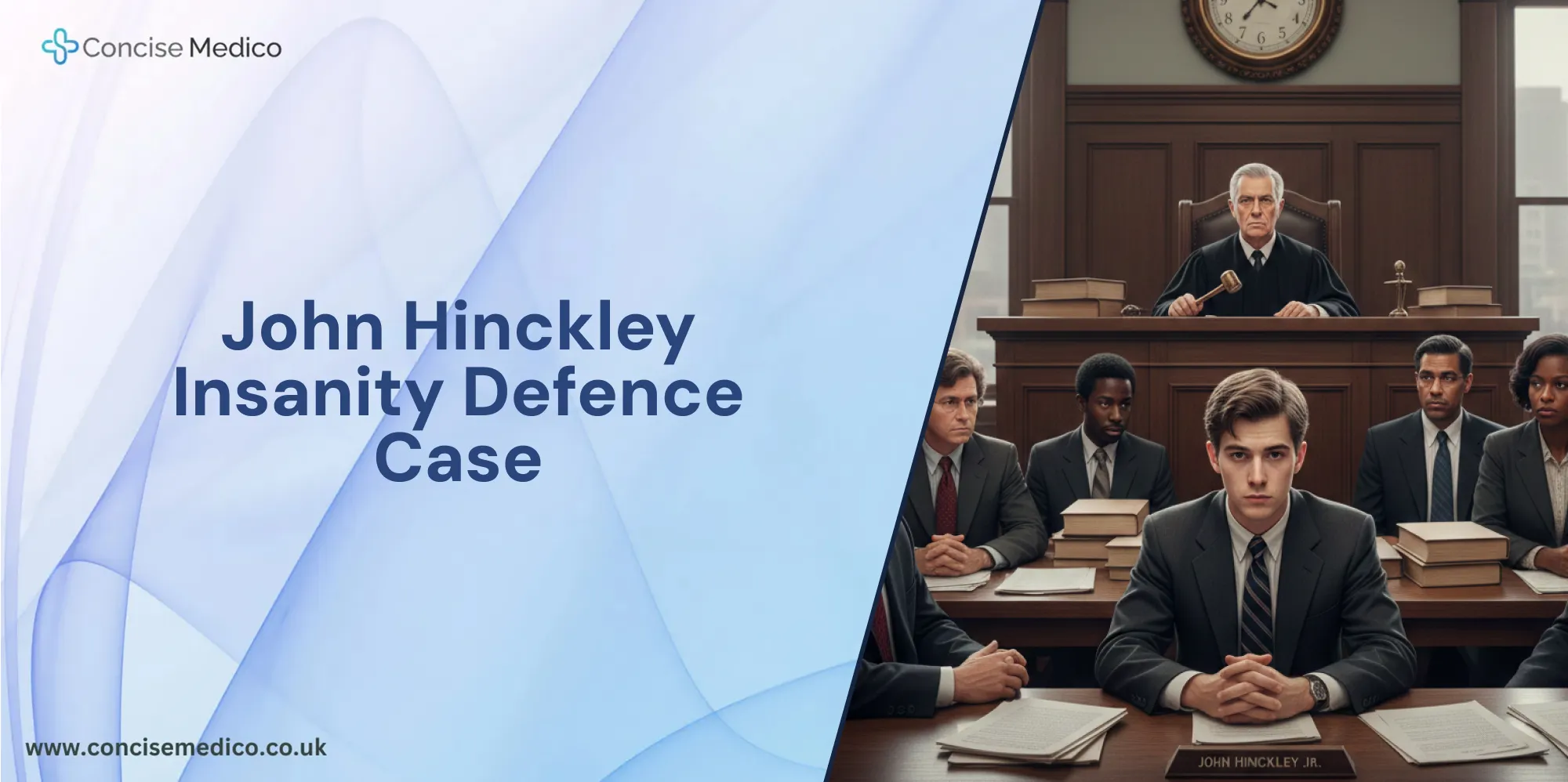A pandemic such as COVID-19 may leave a deep mark on our lives. Even now, its effect echoes in daily life. Many face mental health struggles related to PPSD that sap their energy and cloud their mind. This silent wave of stress proves that recovering from global upheaval takes more than just time. As stated:
“Traumatic impacts lasted long after the epidemic had ended, there was fear of return of the disease and trauma was rekindled with subsequent outbreaks.”
Genry et al.
What is PPSD?
It points out the psychological ramifications of loneliness, sickness, financial hardships, or panic during the pandemic. These stressors keep affecting people even after the restrictions are gone.
What Does PPSD Stand For?
PPSD stands for Post-Pandemic Stress Disorder. It is a mental health issue caused by long-term stress from the COVID-19 pandemic. The concept was presented in 2021 by mental health professional Owen O’Kane. Post-pandemic disorder isn’t a formal diagnosis in medical books yet. Still, many mental health professionals see it as a serious problem.
What Does Post-pandemic Disorder Mean for Mental Health?
The PPSD disorder is often confused with PTSD, but they are different. Post-pandemic stress is caused by a mix of ongoing events, not one big trauma. The effects might not show right away, but they build over the time.
Common PPSD symptoms include:
- Feeling tired all the time
- Fear of going out
- Trouble sleeping
- Panic attacks or mood swings
- Loss of interest in daily life
- Overthinking and worrying too much
- Feeling lonely, even around people
What Causes Post-Pandemic Stress Disorder
There are many reasons why someone may develop this disorder. Some of the top causes include:
- Sudden loss of a loved one due to COVID-19
- Being hospitalised or critically ill
- Long-term isolation or loneliness
- Losing a job or facing financial strain
- Fear of infection and repeated lockdowns
- Lack of emotional support or mental health services

These events may seem minor but have a huge impact over time. They create a heavy emotional load. The brain struggles to process it. This usually leads to post-pandemic stress reactions.
Co-Factors That Make Post-pandemic disorder Worse
Many factors can increase your risk of post-pandemic disorder:
- Chronic illness
- Working in healthcare during the pandemic
- Lack of family or social support
- Living alone during lockdowns
These cofactors affect your stress and make it harder to heal from post-pandemic disorder symptoms.
Mental Health and Post-pandemic Disorder in the UK
In the UK, 37% of adults reported high levels of anxiety even after lockdowns ended. Mind care services noted all-time high inquiries during and after the pandemic. This highlights a vivid correlation between the pandemic and enduring emotional strife. We now refer to these as post-pandemic disorder mental health effects.
John-Paul Pryce Case of Social Anxiety After COVID-19
In 2022, an employment tribunal found that John-Paul Pryce, who developed social anxiety and fear of crowds after catching COVID-19, is disabled under the Equality Act. His request to work from home was refused despite his mental health issues. The case shows courts now recognize pandemic-linked stress as a valid disability claim.
How Does Post-pandemic Disorder Affect Daily Life?
PPSD symptoms can interrupt your daily life in many ways. It may affect:
Work
You might gaze at your task list and feel trapped before you even start. Simple tasks, like answering emails, can drain your energy. You may even feel the need to call in sick for a break.
Relationships
Easy conversation can seem tough, so you pull away from friends and family. Over time, the silence grows, and you may wonder if anyone really notices you’ve changed.
Health
Sharp headaches can throb with every movement, and your body feels heavier than usual. Nights are long and uneasy. This makes your morning feel like a struggle from the moment you wake up.
Emotions
Sadness lies heavy in your chest like a rock that refuses to shift. Panic can erupt suddenly, making your heart race and your ideas swirl.
People with post-pandemic disorder usually feel that others “moved on,” while they are still stuck in the past. This can brew shame and guilt, which complicates the path to healing.
Recognising that PPSD mental health is real and valid is a powerful step toward recovery.
11 Proven Tips To Manage Post-pandemic Disorder
These practical steps helps you to regain balance and well-being:
1. Notice what is happening inside
Take a moment and name what is felt. Say or write something like I am tired, I am avoiding people, or I feel on edge. Making it real helps decide one small next step instead of just moving through the day on autopilot.
2. Talk with one person
Find someone who listens without judgment and says one sentence about how things feel. There is no need to explain everything or ask for advice. A simple line such as I have been feeling off and needed to say it helps. Hearing the words spoken and getting a quiet response makes the load lighter. That connection lowers the sense of being alone in it.
3. Pick what deserves time
Make a small list of what matters today. If something drains energy, skip it. Say things like I need to sit this one out or I will do that another time. Because saying no is a part of healing from post-pandemic syndrome. Keeping some energy for what matters makes the day easier.

4. Move every day
Get up and do something small. Walk for a few minutes. Stretch shoulders, roll ankles, stand and shift weight. Do that a few times during the day. A ten minute walk once a day makes sitting less heavy.
5. Eat regular simple meals
Try to eat at about the same times most days. Don’t let long gaps turn into big hunger dips, have a small bite if needed. Pick real, simple food instead of candy or fizzy drinks; those give a quick lift and then leave energy low. Keep a backup handy, like a piece of fruit or a few nuts, so hunger never builds too far.
6. Keep sleep time steady
Break long sitting by moving. Set a phone alarm to stand, take two steps, lift the heels, twist the torso, or march in place. Do one longer walk of about ten minutes once a day. Keeping the body in motion keeps energy from dropping and makes focus easier.
7. Take short real pauses during the day
Stop for one minute and breathe. Look around and name three things that are visible. Say quietly one thing that went okay or one small thing to be grateful for. These are not long practices. They are brief resets that break the chain of constant forward push. Doing this when the day feels heavy pulls a bit of clarity back and reminds the nervous system that calm is possible.
8. Cut down on constant updates and noise
Limit checking news or social feeds to a couple of set times. Scrolling without a boundary pulls attention and mood in many directions. A plan such as reading headlines once after lunch and then closing the app keeps awareness without letting every new flash become a distraction. That control over input helps keep the day anchored.
9. Connect With Nature
Step onto a balcony, porch, or yard. Look at something far away for a few seconds. Listen to the sounds around. Take one full breath in and out. If outside time isn’t an option, stand near a window, turn away from all devices, and take one full breath in and out. Repeat twice. Let the change in light and air be the break.
10. Join a Support Group
Talking to others with the same struggles can help. PPSD makes days feel heavy and hearing what others do eases that weight. Free online groups in the UK meet by video or chat. Joining one gives a space to say what is hard and to pick up simple ideas. It is okay to try a few until one fits.
11. Seek Expert Help
If you still struggle with PPSD, talk to a mental health expert. They will offer you therapies like CBT and talk therapies and can provide you ways to handle stress and stay in control. In some cases, simple medication may help balance your mood and ease your mind. At Concise Medico, our skilled team helps people with PPSD disorder and other related issues.
Ready to Take Control of Post-Pandemic Stress?
The pandemic has ended, but emotional wounds remain. If you’re experiencing PPSD or know someone who is, now is the time to seek help.
At Concise Medico, we offer trusted assessments and care. Our psychology experts are ready to cater to your emotional needs. If you’re experiencing troubles with post-pandemic disorder effects, don’t hold off.
Get in touch today and make your first move toward recovery.
FAQs
A pandemic such as COVID-19 may leave a deep mark on our lives. Even now, its effect echoes in daily life. Many face mental health struggles related to PPSD that sap their energy and cloud their mind. This silent wave of stress proves that recovering from global upheaval takes more than just time. As stated:
“Traumatic impacts lasted long after the epidemic had ended, there was fear of return of the disease and trauma was rekindled with subsequent outbreaks.”
Genry et al.
What is PPSD?
It points out the psychological ramifications of loneliness, sickness, financial hardships, or panic during the pandemic. These stressors keep affecting people even after the restrictions are gone.
What Does PPSD Stand For?
PPSD stands for Post-Pandemic Stress Disorder. It is a mental health issue caused by long-term stress from the COVID-19 pandemic. The concept was presented in 2021 by mental health professional Owen O’Kane. Post-pandemic disorder isn’t a formal diagnosis in medical books yet. Still, many mental health professionals see it as a serious problem.
What Does Post-pandemic Disorder Mean for Mental Health?
The PPSD disorder is often confused with PTSD, but they are different. Post-pandemic stress is caused by a mix of ongoing events, not one big trauma. The effects might not show right away, but they build over the time.
Common PPSD symptoms include:
- Feeling tired all the time
- Fear of going out
- Trouble sleeping
- Panic attacks or mood swings
- Loss of interest in daily life
- Overthinking and worrying too much
- Feeling lonely, even around people
What Causes Post-Pandemic Stress Disorder
There are many reasons why someone may develop this disorder. Some of the top causes include:
- Sudden loss of a loved one due to COVID-19
- Being hospitalised or critically ill
- Long-term isolation or loneliness
- Losing a job or facing financial strain
- Fear of infection and repeated lockdowns
- Lack of emotional support or mental health services

These events may seem minor but have a huge impact over time. They create a heavy emotional load. The brain struggles to process it. This usually leads to post-pandemic stress reactions.
Co-Factors That Make Post-pandemic disorder Worse
Many factors can increase your risk of post-pandemic disorder:
- Chronic illness
- Working in healthcare during the pandemic
- Lack of family or social support
- Living alone during lockdowns
These cofactors affect your stress and make it harder to heal from post-pandemic disorder symptoms.
Mental Health and Post-pandemic Disorder in the UK
In the UK, 37% of adults reported high levels of anxiety even after lockdowns ended. Mind care services noted all-time high inquiries during and after the pandemic. This highlights a vivid correlation between the pandemic and enduring emotional strife. We now refer to these as post-pandemic disorder mental health effects.
John-Paul Pryce Case of Social Anxiety After COVID-19
In 2022, an employment tribunal found that John-Paul Pryce, who developed social anxiety and fear of crowds after catching COVID-19, is disabled under the Equality Act. His request to work from home was refused despite his mental health issues. The case shows courts now recognize pandemic-linked stress as a valid disability claim.
How Does Post-pandemic Disorder Affect Daily Life?
PPSD symptoms can interrupt your daily life in many ways. It may affect:
Work
You might gaze at your task list and feel trapped before you even start. Simple tasks, like answering emails, can drain your energy. You may even feel the need to call in sick for a break.
Relationships
Easy conversation can seem tough, so you pull away from friends and family. Over time, the silence grows, and you may wonder if anyone really notices you’ve changed.
Health
Sharp headaches can throb with every movement, and your body feels heavier than usual. Nights are long and uneasy. This makes your morning feel like a struggle from the moment you wake up.
Emotions
Sadness lies heavy in your chest like a rock that refuses to shift. Panic can erupt suddenly, making your heart race and your ideas swirl.
People with post-pandemic disorder usually feel that others “moved on,” while they are still stuck in the past. This can brew shame and guilt, which complicates the path to healing.
Recognising that PPSD mental health is real and valid is a powerful step toward recovery.
11 Proven Tips To Manage Post-pandemic Disorder
These practical steps helps you to regain balance and well-being:
1. Notice what is happening inside
Take a moment and name what is felt. Say or write something like I am tired, I am avoiding people, or I feel on edge. Making it real helps decide one small next step instead of just moving through the day on autopilot.
2. Talk with one person
Find someone who listens without judgment and says one sentence about how things feel. There is no need to explain everything or ask for advice. A simple line such as I have been feeling off and needed to say it helps. Hearing the words spoken and getting a quiet response makes the load lighter. That connection lowers the sense of being alone in it.
3. Pick what deserves time
Make a small list of what matters today. If something drains energy, skip it. Say things like I need to sit this one out or I will do that another time. Because saying no is a part of healing from post-pandemic syndrome. Keeping some energy for what matters makes the day easier.

4. Move every day
Get up and do something small. Walk for a few minutes. Stretch shoulders, roll ankles, stand and shift weight. Do that a few times during the day. A ten minute walk once a day makes sitting less heavy.
5. Eat regular simple meals
Try to eat at about the same times most days. Don’t let long gaps turn into big hunger dips, have a small bite if needed. Pick real, simple food instead of candy or fizzy drinks; those give a quick lift and then leave energy low. Keep a backup handy, like a piece of fruit or a few nuts, so hunger never builds too far.
6. Keep sleep time steady
Break long sitting by moving. Set a phone alarm to stand, take two steps, lift the heels, twist the torso, or march in place. Do one longer walk of about ten minutes once a day. Keeping the body in motion keeps energy from dropping and makes focus easier.
7. Take short real pauses during the day
Stop for one minute and breathe. Look around and name three things that are visible. Say quietly one thing that went okay or one small thing to be grateful for. These are not long practices. They are brief resets that break the chain of constant forward push. Doing this when the day feels heavy pulls a bit of clarity back and reminds the nervous system that calm is possible.
8. Cut down on constant updates and noise
Limit checking news or social feeds to a couple of set times. Scrolling without a boundary pulls attention and mood in many directions. A plan such as reading headlines once after lunch and then closing the app keeps awareness without letting every new flash become a distraction. That control over input helps keep the day anchored.
9. Connect With Nature
Step onto a balcony, porch, or yard. Look at something far away for a few seconds. Listen to the sounds around. Take one full breath in and out. If outside time isn’t an option, stand near a window, turn away from all devices, and take one full breath in and out. Repeat twice. Let the change in light and air be the break.
10. Join a Support Group
Talking to others with the same struggles can help. PPSD makes days feel heavy and hearing what others do eases that weight. Free online groups in the UK meet by video or chat. Joining one gives a space to say what is hard and to pick up simple ideas. It is okay to try a few until one fits.
11. Seek Expert Help
If you still struggle with PPSD, talk to a mental health expert. They will offer you therapies like CBT and talk therapies and can provide you ways to handle stress and stay in control. In some cases, simple medication may help balance your mood and ease your mind. At Concise Medico, our skilled team helps people with PPSD disorder and other related issues.
Ready to Take Control of Post-Pandemic Stress?
The pandemic has ended, but emotional wounds remain. If you’re experiencing PPSD or know someone who is, now is the time to seek help.
At Concise Medico, we offer trusted assessments and care. Our psychology experts are ready to cater to your emotional needs. If you’re experiencing troubles with post-pandemic disorder effects, don’t hold off.
Get in touch today and make your first move toward recovery.




